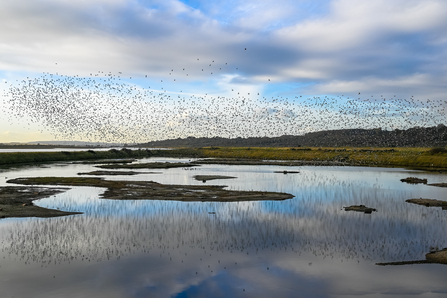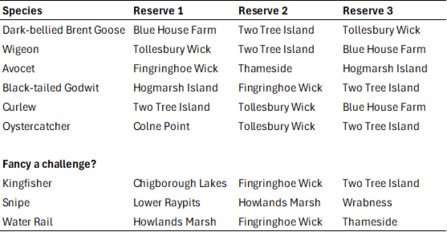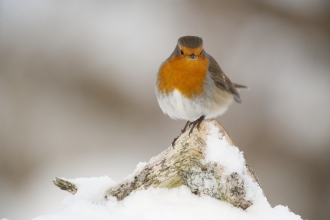The county’s coastline, estuaries, and wetlands are nationally and internationally important for migratory species, providing vital feeding and resting grounds during the colder months.
At Essex Wildlife Trust, our coastal and wetland nature reserves are carefully managed with these birds in mind. Each winter, our dedicated teams monitor species numbers across the county, helping us understand how birds use these habitats — and allowing us to make informed conservation decisions to protect them for the future.
Where to see the spectacle
For sheer numbers of birds, our inland reservoirs are unbeatable.
Abberton Reservoir Nature Discovery Park is one of the UK’s most important inland waters for wildfowl. Abberton teems with wintering ducks, geese and swans. Look out for goldeneye, smew, and pintail among large flocks of tufted duck and pochard.
Hanningfield Reservoir Nature Discovery Park is another fantastic spot for winter wildfowl. The hides and trails here offer great views of goosander, shoveler and teal, while tree-lined paths may reveal mixed flocks of finches and winter thrushes.
Spectacular coastal gatherings
If you prefer the salty air and sweeping estuary views, Essex’s coastal reserves host some of the most dramatic bird spectacles of the season.
Thameside Nature Discovery Park overlooks the Thames Estuary, this reserve is ideal for spotting waders and waterfowl at high tide, including flocks of dunlin and knot that can number in the thousands.
Two Tree Island is a hotspot for redshank, curlew and avocet, with occasional appearances from rarities like short-eared owl or bittern on cold, clear days.
Tollesbury Wick has vast saltmarsh landscapes alive with brent geese, wigeon and lapwing. Keep an eye out for hunting marsh harriers quartering low over the reeds.





